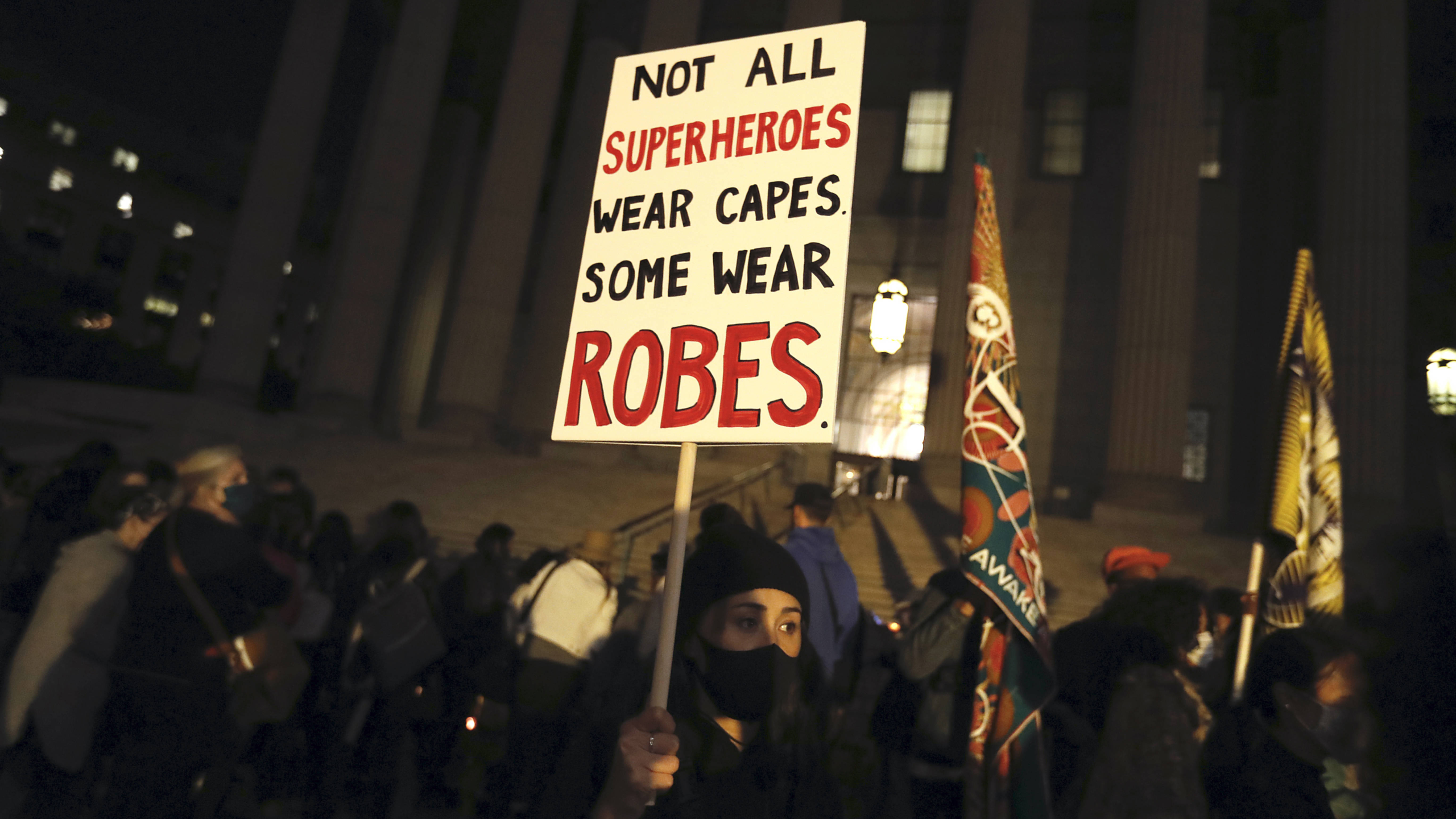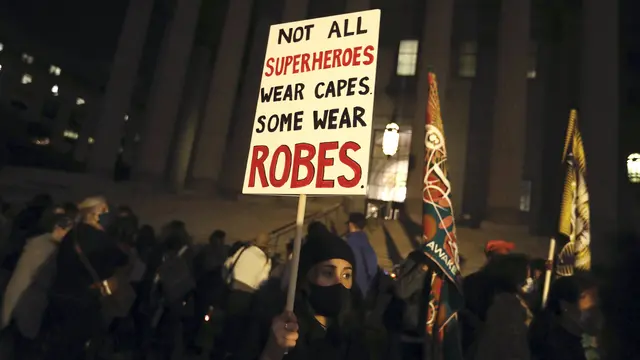
People gather in front of Foley Square Courthouse in memory of Justice Ruth Bader Ginsburg in New York City, U.S., September 19, 2020 /Getty Images
**Editor's Note: **Stephen Ndegwa is a Nairobi-based communications consultant and international affairs columnist. The article reflects the author's views, and not necessarily those of CGTN.
In the era of U.S. President Donald Trump, nothing passes without controversy. Indeed, the death of Ruth Bader Ginsburg, Justice of the Supreme Court of the U.S. (SCOTUS), on Friday has created a lot of heat, not only about the timing of her replacement, but also the need to revisit the values she held so dear.
The liberal Ginsburg fought the good fight, both as an arch feminist and protector of human rights. At 87 years old, the lady justice had survived a couple of cancer operations that would have totally grounded a person of lesser willpower. The fact that she never quit until the end is testament to her steely character and selflessness in pursuit of justice for all.
The words of Chief Justice John Roberts in a statement last Friday summed it up: "Today we mourn, but with confidence that future generations will remember Ruth Bader Ginsburg as we knew her – a tireless and resolute champion of justice."
Ginsburg's fight for gender equality stood out above her overall fight for human rights in the U.S. This is ironic in a country that prides itself as a land of equal rights and justice regardless of race, creed and color.
Ginsburg made her mark way back in 1972 when as manager of the American Civil Liberties Union's Women's Rights Project she took on the case of Capt. Susan Struck, who had been laid off because of her pregnancy. She noted that "Laws which disable women from full participation in the political, business and economic arenas are often characterized as 'protective' and beneficial."
Before her appointment to SCOTUS on June 14, 1993, Ginsburg had already earned a name fighting gender discrimination in the U.S.

Supreme Court Chief Justice William Rehnquist (R) swears in new justice Ruth Bader Ginsburg as her husband Martin (2nd L) and President Bill Clinton (L) look on. /Getty Images
She had reason to fight. According to data published in February 2019 by the Inter-Parliamentary Union, an advocacy group, the U.S. ranked 75th out of 193 countries in women's representation in government.
Further, the number of women in Congress did not meet the global average of 24.1 per cent. It is a shame that the U.S. was surpassed by developing countries in this area, such as Rwanda (61.4 percent), Cuba (53.2 percent) and Bolivia (53.1 percent).
The ultimate shocker came when Americans voted for political neophyte and rabble-rouser Donald Trump, throwing the experienced and sober former First Lady and Democratic Party candidate Hillary Clinton under the bus.
While women comprise almost half of the labor force in the U.S., statistics in 2016 showed that they owned 38 percent of businesses. The latter is a barometer of the level of women empowerment and independence.
A recent study on gender inequality in the workplace shows that in 2020 women in the U.S. make only 0.81 U.S. dollar for every dollar a man makes. The report also says that the "gender pay gap is wider for women of color, women in executive level roles, women in certain occupations and industries, and in some U.S. states." All this is happening over 55 years after the passing of the Equal Pay Act, which was aimed at stopping gender pay discrimination.
Equality in U.S. boardrooms of top firms is also a work in progress. A study released in January 2019 by the Alliance for Board Diversity and undertaken by professional services firm Deloitte showed that in 2018 women and minorities occupied 38.6 percent and 34 percent of board seats at Fortune 100 and Fortune 500 companies respectively.
However, the U.S. never tires of pontificating to other nations about gender equality, even putting it as a condition for close cooperation. But it is about different strokes depending on the strategic value of each partner. It does not stress gender parity in the composition of governments that are close allies, while dictating to second-tier and third-tier cooperators on the need to enshrine gender equality in their constitutions.
Japan, for instance, has the lowest political representation for women in the industrialized world. According to statistics published in March 2019, the proportion of female representatives in the country's House of Representatives was a meager 10.2 per cent. But the U.S. may not want to rub its ally the wrong way, waiting for nature to take its course.
A "weak" country like Kenya does not have such luck. During the constitutional review process a decade ago, the U.S. government coerced lawmakers and other stakeholders to ensure that they included a clause placing a two-thirds ceiling in the representation of either gender at all levels of State and public affairs. But this requirement is apparently not feasible in the foreseeable future, and has never been achieved.
Even at the nine-member Supreme Court where Ginsburg would have expected to win her gender parity case, women were still outnumbered three to six men. There has been no radical change in the plight of women in the U.S. since her 1972 case when she argued: "The pedestal upon which women have been placed has all too often, upon closer inspection, been revealed as a cage – I ask no favor for my sex. All I ask of our brethren is that they take their feet off our necks."
(If you want to contribute and have specific expertise, please contact us at [email protected])
 简体中文
简体中文

